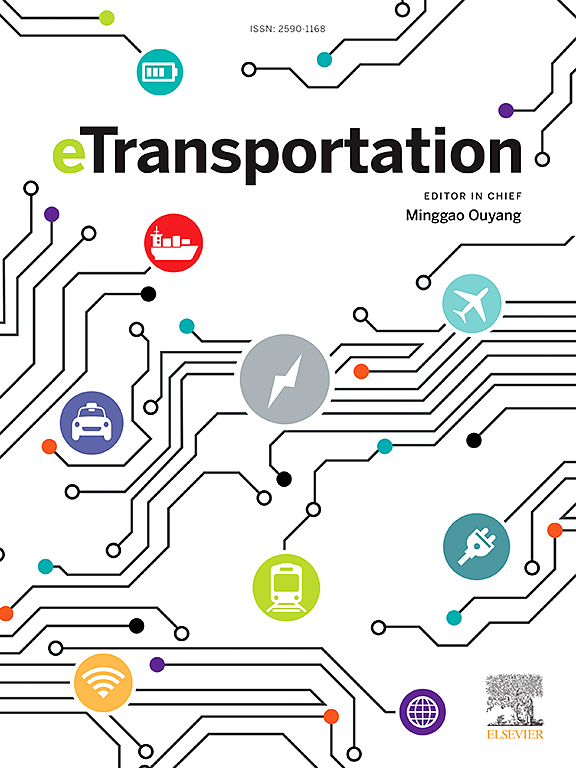Electric machine co-optimization for EV drive technology development: Integrating Bayesian optimization and nonlinear model predictive control
IF 17
1区 工程技术
Q1 ENERGY & FUELS
引用次数: 0
Abstract
Electric powertrains are becoming increasingly prevalent in various mobile propulsion applications, not only due to legislations for lower CO emissions and local pollution, but also due to growing sustainable consciousness. However, conceptualizing those systems, consisting of component and controller design processes, is a complex task. The complexity itself arises from the amount of requirements for design objectives and use-cases, which can be met inside a multidimensional parameter space. Additionally, system design and evaluation are inherently tied to coupled component and system control strategy optimization. In this context, the paper presents a fully automated active machine learning methodology applied for a combined optimization of electric machine and system controller design, considering system performance, durability, and energy consumption. During this iterative approach a stochastic optimization of a permanent magnet synchronous machine (PMSM) takes place, constrained from a nonlinear model predictive control in a model-in-the-loop system environment. The active learning is covered by a Bayesian optimization algorithm with a Gaussian process regression to determine the most suitable parameter set in terms of exploration and exploitation. To demonstrate the feasibility of this novel methodology, a thermal subsystem from an electrified state-of-the-art powertrain has been used and further optimized regarding PMSM scaling and final gear ratio. Different real-world drive scenarios from highway to city were taken into account to cover typical sport utility vehicle use-cases. It could be shown that the electric machine losses of the optimized system are reduced by up to , which equals a consumption of compared to the reference vehicle. Due to slightly worse operating conditions of the inverter the whole system consumption has been minimized by . Three parameter studies with fixed iteration count have been executed to find the optimal machine diameter to be increased by and the length slightly reduced by . Moreover, the total gear ratio was adjusted by to shift the load points of highest energy conversion into the machine’s optimal efficiency area.

面向电动汽车驱动技术发展的电机协同优化:贝叶斯优化与非线性模型预测控制的集成
电动动力系统在各种移动推进应用中变得越来越普遍,这不仅是因为降低二氧化碳排放和当地污染的立法,还因为人们日益增强的可持续意识。然而,概念化这些由组件和控制器设计过程组成的系统是一项复杂的任务。复杂性本身源于设计目标和用例的需求数量,这些需求可以在多维参数空间中得到满足。此外,系统设计和评估与耦合组件和系统控制策略优化密切相关。在此背景下,本文提出了一种全自动主动机器学习方法,用于电机和系统控制器设计的组合优化,考虑到系统性能,耐久性和能耗。在此迭代方法中,永磁同步电机(PMSM)在模型在环系统环境中受到非线性模型预测控制的约束,进行随机优化。主动学习是通过贝叶斯优化算法和高斯过程回归来确定最适合探索和开发的参数集。为了证明这种新方法的可行性,使用了电气化动力系统的热子系统,并对PMSM缩放和最终传动比进行了进一步优化。考虑到从高速公路到城市的不同现实驾驶场景,以涵盖典型的运动型多用途车用例。结果表明,与参考车辆相比,优化后的系统电机损耗降低了32.7%,相当于- 0.43kWh100km的功耗。由于逆变器的运行条件稍差,整个系统的消耗已被最小化- 0.35kWh100km。在固定迭代次数下进行了三个参数的研究,找到了机器直径增加25%,长度稍微减少16%的最佳方案。此外,总传动比调整为- 31%,以将最高能量转换的负载点转移到机器的最佳效率区域。
本文章由计算机程序翻译,如有差异,请以英文原文为准。
求助全文
约1分钟内获得全文
求助全文
来源期刊

Etransportation
Engineering-Automotive Engineering
CiteScore
19.80
自引率
12.60%
发文量
57
审稿时长
39 days
期刊介绍:
eTransportation is a scholarly journal that aims to advance knowledge in the field of electric transportation. It focuses on all modes of transportation that utilize electricity as their primary source of energy, including electric vehicles, trains, ships, and aircraft. The journal covers all stages of research, development, and testing of new technologies, systems, and devices related to electrical transportation.
The journal welcomes the use of simulation and analysis tools at the system, transport, or device level. Its primary emphasis is on the study of the electrical and electronic aspects of transportation systems. However, it also considers research on mechanical parts or subsystems of vehicles if there is a clear interaction with electrical or electronic equipment.
Please note that this journal excludes other aspects such as sociological, political, regulatory, or environmental factors from its scope.
 求助内容:
求助内容: 应助结果提醒方式:
应助结果提醒方式:


